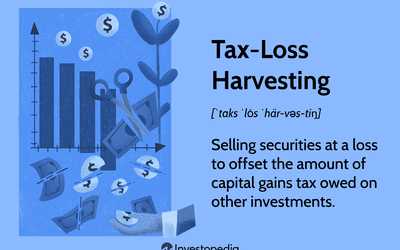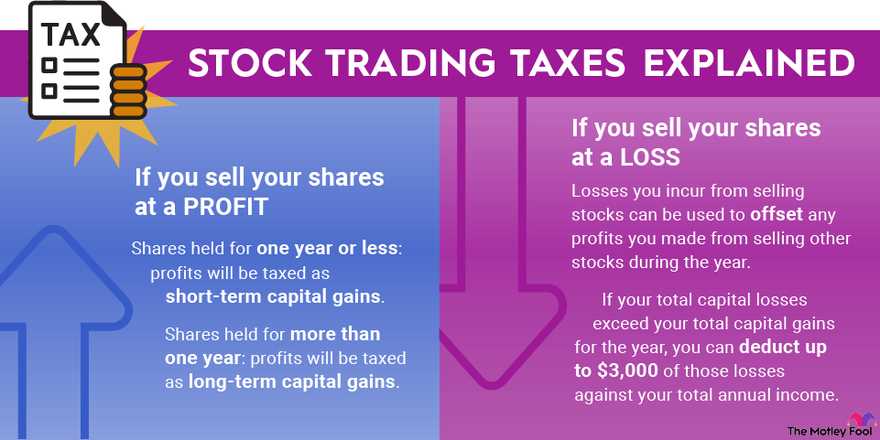Tax Selling: A Comprehensive Guide
What is Tax Selling?
How Does Tax Selling Work?

When implementing a tax selling strategy, investors must carefully consider the wash-sale rule. According to this rule, if an investor sells a security at a loss and repurchases a substantially identical security within 30 days before or after the sale, the loss is disallowed for tax purposes. To avoid violating the wash-sale rule, investors can either wait for more than 30 days to repurchase the security or invest in a similar but not substantially identical security.
It is important to note that tax selling should not be the sole reason for making investment decisions. The primary focus should always be on the long-term goals and objectives of the investment portfolio. Tax selling should be viewed as a tool to optimize tax efficiency rather than driving investment decisions.
Tax Benefits for Investors
There are several tax benefits that investors can enjoy by implementing a tax selling strategy:
- Capital Gains Offset: By selling investments at a loss, investors can offset any capital gains realized during the same tax year. This can help reduce the amount of taxes owed on the gains.
- Tax Deductions: The losses incurred from tax selling can be used to offset other taxable income, such as dividends or interest. This can potentially lower the investor’s overall tax liability.
- Portfolio Optimization: Tax selling provides an opportunity for investors to review their investment portfolio and make adjustments. By selling underperforming investments, investors can reallocate their capital to potentially more profitable opportunities.
It is important for investors to consult with a tax professional or financial advisor before implementing a tax selling strategy. They can provide personalized advice based on the investor’s specific financial situation and goals.
Tax selling is a strategy used by investors to offset capital gains and reduce their tax liability. It involves selling securities or assets that have decreased in value to generate capital losses, which can then be used to offset capital gains made on other investments.
Capital Gains and Losses
Before diving into tax selling, it is important to understand the concept of capital gains and losses. A capital gain is the profit made from the sale of an investment, such as stocks, bonds, or real estate. Conversely, a capital loss occurs when an investment is sold for less than its original purchase price.
When an investor sells an investment for a profit, they are subject to capital gains tax on that profit. The tax rate for capital gains depends on various factors, including the investor’s income level and the length of time the investment was held. On the other hand, if an investor sells an investment at a loss, they can use that loss to offset any capital gains they may have incurred.
The Benefits of Tax Selling
One of the main benefits of tax selling is the ability to reduce or eliminate capital gains taxes. By strategically selling investments that have decreased in value, investors can generate capital losses that can be used to offset capital gains made on other investments. This can result in a lower overall tax liability for the investor.
Additionally, tax selling can help investors rebalance their portfolios and optimize their investment strategies. By selling underperforming investments, investors can free up capital to invest in more promising opportunities. This can lead to improved overall portfolio performance and potentially higher returns in the long run.
It is important to note that tax selling should be approached with caution and in consultation with a tax professional. There are specific rules and regulations surrounding tax selling, and it is important to ensure compliance with these rules to avoid any penalties or legal issues.
Tax Benefits for Investors

1. Capital Gains Tax
One of the primary tax benefits for investors is the favorable treatment of capital gains. When an investor sells an investment for a profit, they are subject to capital gains tax. However, the tax rate on long-term capital gains is typically lower than the tax rate on ordinary income.
For example, in the United States, the tax rate on long-term capital gains can be as low as 0% for individuals in the lowest income tax bracket and a maximum of 20% for individuals in the highest income tax bracket. This lower tax rate allows investors to keep a larger portion of their investment profits.
2. Tax-Advantaged Accounts
Another tax benefit for investors is the availability of tax-advantaged accounts, such as individual retirement accounts (IRAs) and 401(k) plans. These accounts offer tax advantages that can help investors save for retirement.
Contributions to traditional IRAs and 401(k) plans are made with pre-tax dollars, meaning that the investor can deduct the contribution amount from their taxable income. This reduces their current tax liability and allows their investments to grow tax-deferred until retirement, when withdrawals are taxed as ordinary income.
Roth IRAs and Roth 401(k) plans, on the other hand, are funded with after-tax dollars. While contributions to these accounts are not tax-deductible, qualified withdrawals in retirement are tax-free. This can be advantageous for investors who expect to be in a higher tax bracket in retirement.
3. Tax Loss Harvesting
Tax loss harvesting is a strategy that allows investors to offset capital gains with capital losses. By selling investments that have declined in value, investors can realize a capital loss, which can be used to offset capital gains and reduce their overall tax liability.
This strategy is particularly useful in years when an investor has realized significant capital gains and wants to minimize the associated tax burden. By strategically selling investments that have declined in value, investors can effectively reduce their taxable income and potentially lower their tax bill.
Conclusion
Disclaimer: This article is for informational purposes only and should not be construed as tax advice. Consult with a qualified tax professional for personalized advice regarding your specific tax situation.
Tax Benefits for Investors
Investing in the stock market can be a lucrative endeavor, but it also comes with its fair share of taxes. However, there are tax benefits available to investors that can help minimize their tax liability and maximize their returns.
One of the main tax benefits for investors is the ability to offset capital gains with capital losses. When an investor sells a stock or other investment at a profit, they are required to pay taxes on the capital gains. However, if they have other investments that have decreased in value, they can sell those investments at a loss and use those losses to offset the gains. This can help reduce the overall tax liability and potentially result in a lower tax bill.
Another tax benefit for investors is the ability to defer taxes through retirement accounts. Contributions to retirement accounts, such as a 401(k) or an IRA, are typically tax-deductible, meaning that investors can reduce their taxable income by the amount of their contributions. Additionally, any earnings within the retirement account are tax-deferred, meaning that investors do not have to pay taxes on them until they withdraw the funds in retirement. This can provide significant tax savings over the long term.
Investors can also take advantage of tax-efficient investment strategies to minimize their tax liability. For example, they can focus on investments that generate qualified dividends, which are taxed at a lower rate than ordinary income. They can also invest in tax-exempt municipal bonds, which provide income that is generally exempt from federal taxes. By being strategic with their investments, investors can maximize their after-tax returns.
Lastly, investors may be eligible for certain tax credits and deductions. For example, they may be able to claim a credit for foreign taxes paid on international investments or deduct investment-related expenses, such as advisory fees or research costs. These credits and deductions can further reduce the tax burden on investors.

Emily Bibb simplifies finance through bestselling books and articles, bridging complex concepts for everyday understanding. Engaging audiences via social media, she shares insights for financial success. Active in seminars and philanthropy, Bibb aims to create a more financially informed society, driven by her passion for empowering others.
